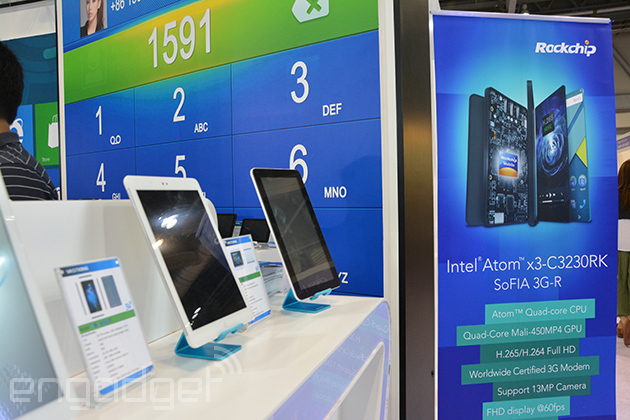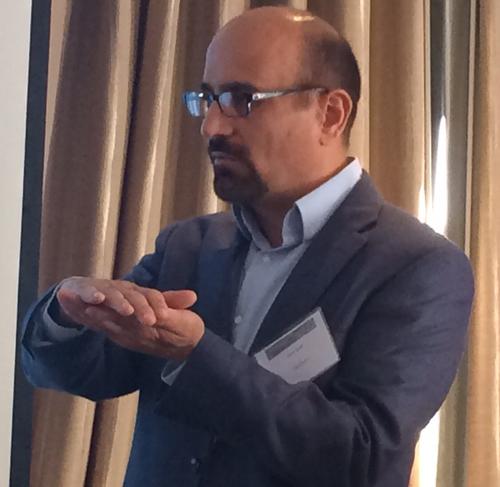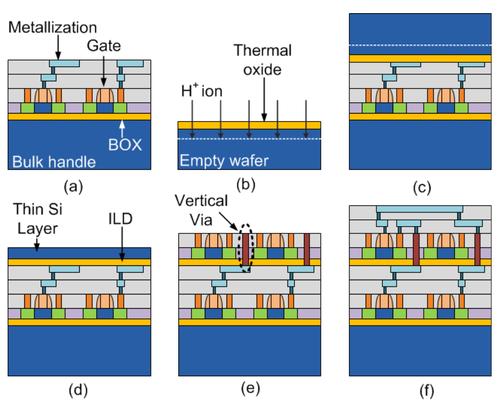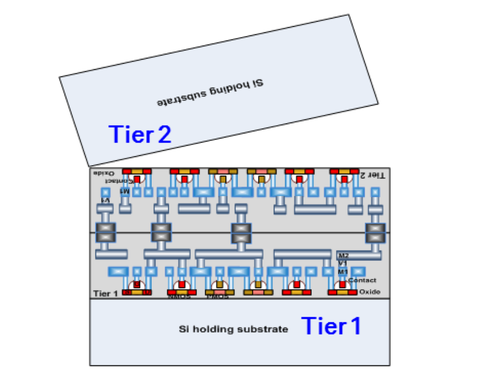"China is the number one market with connected products."
That was how Intel's Senior Vice President Kirk Skaugen kicked off
his keynote at IDF in Shenzhen, citing China's staggering 30 percent
share of worldwide connected-device purchases in 2014. The country
gobbled up 40 percent of the 46 million Intel-powered tablets shipped
globally. Not bad, but 46 million is hardly anything compared to the
420.7 million smartphones shipped in China
alone
in the same year -- only a tiny percentage of which packed an Intel
chip. Most others relied on Qualcomm, MediaTek and Samsung. Intel's
smartphone market share is so small that it never dared to share the
stats; it could be as low as 2.81 percent in the Android space,
according to benchmark specialist
AnTuTu.
This isn't something that Intel can fix overnight, but with the
launch of its Atom x3 "SoFIA" chips, it's hoping to narrow the gap this
year. Atom x3 is actually Intel's first family of chips with an
integrated modem, which offers the advantage of improved power
efficiency as well as reduced space and costs. It's still going to be a
hard sell, though, especially given that the LTE flavor of Atom x3 won't
ship until the second half of this year. But at least Intel's found a
cunning strategy to stay relevant:
partnering with Chinese chip designers
Rockchip and Spreadtrum to leverage their connections with local device
manufacturers. In other words, these two companies get to offer
Intel-powered designs to their clients.
 A selection of budget tablets in a Hong Kong mall, many of which are powered by Intel's Bay Trail processor.
A selection of budget tablets in a Hong Kong mall, many of which are powered by Intel's Bay Trail processor.
We won't judge you if you're not familiar with Rockchip and
Spreadtrum. Both firms only dabble in the lowest-end smartphone, tablet
and TV stick markets. The places that are packed with
KIRFs and brands you've never heard of. On the Chinese retail site
Taobao, we managed to find a Rockchip-powered 9.7-inch Android tablet that cost just 390 yuan, or about $63.
There's plenty of reason to worry that these cheap devices will tarnish Intel's brand.
Now, this is obviously a case of "you get what you pay for." Ugly or
copycat designs, rough seams, scratched metal parts, laggy software, you
name it. Not to mention the lack of Google services. Nicole Scott from
Mobile Geeks
said what many of us were thinking in her post-IDF piece: "I have never
seen a Rockchip product that I thought was of good quality." There's
plenty of reason to worry that these cheap devices will tarnish Intel's
brand.
 An Intel Atom x3-powered Samsung Galaxy S5 clone.
An Intel Atom x3-powered Samsung Galaxy S5 clone.
Skaugen isn't terribly concerned, however. "In the last year, we've
seen a dramatic improvement in the overall quality in craftsmanship
that's come out of Shenzhen," the exec defended. He also points out how
the likes of General Motors and Volkswagen have prospered by engaging in
China early with local partners.
"When you're here early and you're helping," he said, "I think you
would rather be in the position that those companies are in. And quality
does get better over time, but you do have to transfer some of your
knowledge on how to build even higher-quality products."
In this case, "transfer" is just a pretty way of saying "selling
reference designs." Intel does so through its turnkey program, in which
vendors can either buy some parts from a list of recommended suppliers,
or simply slap their own brand onto Intel's complete reference devices.
Going the latter route can get them to market in just six to eight
weeks. Such speed is critical in the super competitive entry-level
market. According to Intel, last year 30 ODMs made 350 devices based on
its reference designs, and those shipped to 50 countries.
 Bluebank president Tao He shows off his $50 5-inch smartphone powered by Intel's Atom x3.
Bluebank president Tao He shows off his $50 5-inch smartphone powered by Intel's Atom x3.
"Intel's turnkey solution has greatly lowered the entry barrier."
Rockchip, Spreadtrum, MediaTek and Qualcomm also have their own
turnkey solutions, with MediaTek pretty much pioneering this business
model in its
copycat
feature phone days. Intel's clear advantage over the competition lies
within its x86-64 architecture (so both Android and full-on Windows are
compatible),
RealSense depth camera technology and
wireless power
know-how. The chip giant also claims to offer higher reliability, with
customers seeing a 20 percent lower return rate with devices based on
its reference designs. At IDF, Skaugen even got Tao He, the president of
Chinese device maker Bluebank, to openly praise how much better Intel's
reference designs and tech support are.
"If I must complain, Intel's turnkey solution has greatly lowered the
entry barrier, making it very easy to design devices," He joked in
front of the already amused crowd.
Bluebank is just one of the many Chinese ODMs that are already
offering Atom x3-powered devices to potential clients. On the stage, He
showed off a 4.5-inch smartphone that will retail for less than $40 (He
also mentioned a 4-inch version for about $30), a 5-inch phone with a
metallic frame for around $50 and a 7-inch (8mm-thick) tablet with voice
calling for just $55. The audience wowed at the tablet.
In addition to Bluebank and its four aforementioned devices, Intel
has enlisted 13 other ODMs to commit to 44 more Atom x3 designs this
year. And that's on top of Rockchip's 10 ODMs that will use the 3G-R
variant (3G, quad-core) of the chip. While this doesn't necessarily
reflect the eventual number of consumer models (and some of those
designs could have already been sold with other chipsets), it's still a
good start; though the 4G-enabled Atom x3 needs to arrive as soon as
possible.
 Atom x3-based tablets at an electronics expo in Hong Kong.
Atom x3-based tablets at an electronics expo in Hong Kong.
Both Intel and Rockchip desperately need more quality "hero" devices.
It's all good and well that Intel sees great potential in the
entry-level market, but for its new mobile chip to succeed, it must
teach its partners -- especially on Rockchip's side -- to respect
intellectual property. Both Intel and Rockchip desperately need more
quality "hero" devices to boost brand perception. But with Intel-powered
knockoffs floating around, it'll be hard to convince other big names to
join the party. In the mainstream mobile market, Intel's only got
ASUS and occasionally
Lenovo on its side.
Even with the potential for intellectual property scuffles, Intel has
clearly made the right move by partnering with Rockchip. After all, we
are talking about a Chinese company that's working with Google on a system-on-chip module for
Project Ara.
The company obviously has growing global clout. Intel may be late to
the integrated-modem game, but with Rockchip's connections plus growing
street cred, it could be on track to catch up with the competition,
especially in China where even Qualcomm
stumbled recently.
"We want to build long-term partnerships with China," Skaugen said.
"This is our 30th anniversary in China. I think some of these partners
are the people that will build Intel's brand for the next 30 years. And
if you look at companies like Apple or HP that started in the garage,
let's not forget what the first PCs looked like. And decades later, I'm
glad I have those partnerships."
http://www.engadget.com/2015/04/20/intels-success-in-china-hinges-on-budget-phones-and-tablets/








 Ossia
Ossia  Ossia
Ossia 






